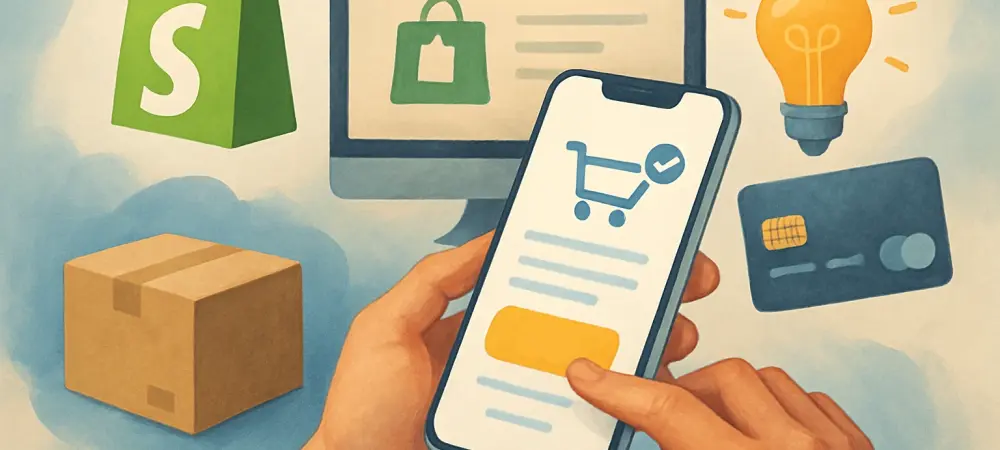In the fast-evolving world of e-commerce, where every click counts, a staggering 43% of European shoppers refuse to return to a retailer after a frustrating checkout experience, according to payabl.’s State of European Checkout Report. This statistic paints a stark reality for Shopify merchants striving to capture and retain customers in a fiercely competitive market. With the checkout process often being the make-or-break moment in an online purchase, the pressure is on for merchants to deliver speed, security, and simplicity. Enter payabl., a European fintech provider, with its innovative payment integration for Shopify that promises to transform this critical step into a seamless advantage. This feature dives into how this solution addresses modern demands and positions merchants for success.
Why Checkout Innovation Matters to Merchants
The checkout stage is no longer just a transactional formality; it’s a pivotal touchpoint that shapes customer perceptions. A slow or complicated process can lead to abandoned carts and lost revenue, with studies showing that even a one-second delay in page load time can reduce conversions by 7%. For Shopify merchants, particularly those targeting the European market, staying ahead means adapting to consumer expectations for efficiency and trust at every step.
Beyond immediate sales, a streamlined checkout fosters long-term loyalty. When customers encounter friction-free payment options, they’re more likely to return, boosting lifetime value. payabl.’s integration steps into this space with a focus on eliminating pain points, offering merchants a chance to turn a potential weakness into a defining strength.
The High Stakes of European E-commerce
Europe’s online shopping landscape is thriving, with Ecommerce Europe reporting a B2C turnover of €958 billion in the latest figures. Eurostat adds that 77% of EU internet users are active online buyers, signaling immense opportunity for merchants. Yet, this growth comes with heightened expectations, as consumers demand faster and more reliable transactions tailored to their preferences.
Failure to meet these standards carries heavy consequences. payabl.’s research highlights that nearly a third of shoppers are eager to adopt new payment methods if they promise quicker checkouts. For Shopify merchants, ignoring these trends risks losing ground to competitors who prioritize the payment experience, making innovative solutions a critical piece of the puzzle.
Unveiling payabl.’s Transformative Features for Shopify
At the heart of payabl.’s integration lies a suite of features crafted to tackle checkout challenges head-on. Merchants gain access to diverse payment methods, starting with credit and debit cards, while upcoming support for PayPal and Wero ensures broader appeal across markets. This flexibility allows businesses to cater to varied customer habits, enhancing accessibility. Speed is another cornerstone, with onboarding completed in as little as 48 hours, backed by a dedicated support team. Additionally, robust tools like 3D Secure authentication and AI-driven fraud protection safeguard transactions, while chargeback management streamlines post-purchase issues. Designed for small to mid-sized merchants, developers, and agencies, this extension prioritizes quick setup and reliable performance to support scaling efforts.
These elements combine to address core needs—speed, safety, and simplicity—that directly impact conversion rates. By embedding such capabilities into a single platform, payabl. offers Shopify merchants a comprehensive way to elevate their checkout process without the burden of complex integrations.
Expert Perspective on Payments as a Strategic Advantage
Breno Oliveira, Head of Product at payabl., underscores the significance of this launch: == “Embedding our solution within the Shopify ecosystem empowers merchants with secure payments and fuels international growth while navigating Europe’s dynamic payment landscape.”== His insight points to a broader shift where payments are no longer a backend function but a frontline driver of customer satisfaction.
Oliveira also notes that merchants who emphasize speed and reliability at checkout carve out a distinct competitive edge. This aligns with industry observations that seamless transactions can significantly increase repeat purchases. As payments evolve into a key differentiator, solutions like this integration become vital investments for sustained business growth.
Practical Steps for Merchants to Maximize payabl.’s Potential
For Shopify merchants ready to enhance their checkout, integrating payabl. starts with a straightforward process. Downloading the extension from the Shopify App Store and completing the swift onboarding—often within 48 hours—sets the stage for immediate impact. This rapid deployment minimizes downtime and accelerates benefits.
Customization is key to reaching diverse customers. Enabling initial payment options like credit and debit cards, with more methods on the horizon, helps attract a wider audience. Merchants can also activate security features such as 3D Secure and AI-powered fraud prevention to build trust, while tools for refunds and chargebacks simplify operations.
Continuous improvement ensures lasting results. Collaborating with payabl.’s support team to monitor checkout performance and adapt based on customer feedback keeps the experience optimized. These actionable steps transform the payment process into a powerful tool for boosting satisfaction and driving business expansion.
Reflecting on a Step Forward for E-commerce
Looking back, payabl.’s integration with Shopify marked a significant stride for European merchants navigating a bustling yet demanding digital marketplace. It tackled critical challenges like checkout efficiency and transaction security, which had long been pain points for many businesses. The emphasis on rapid deployment and adaptable payment options provided a lifeline for those seeking to keep pace with consumer demands.
Merchants who adopted this solution found themselves better equipped to handle the complexities of online sales. For others still on the fence, the path ahead involved evaluating how such innovations could align with their growth goals. Exploring partnerships with fintech providers offered a promising avenue to not only meet current expectations but also anticipate future shifts in the e-commerce landscape.

